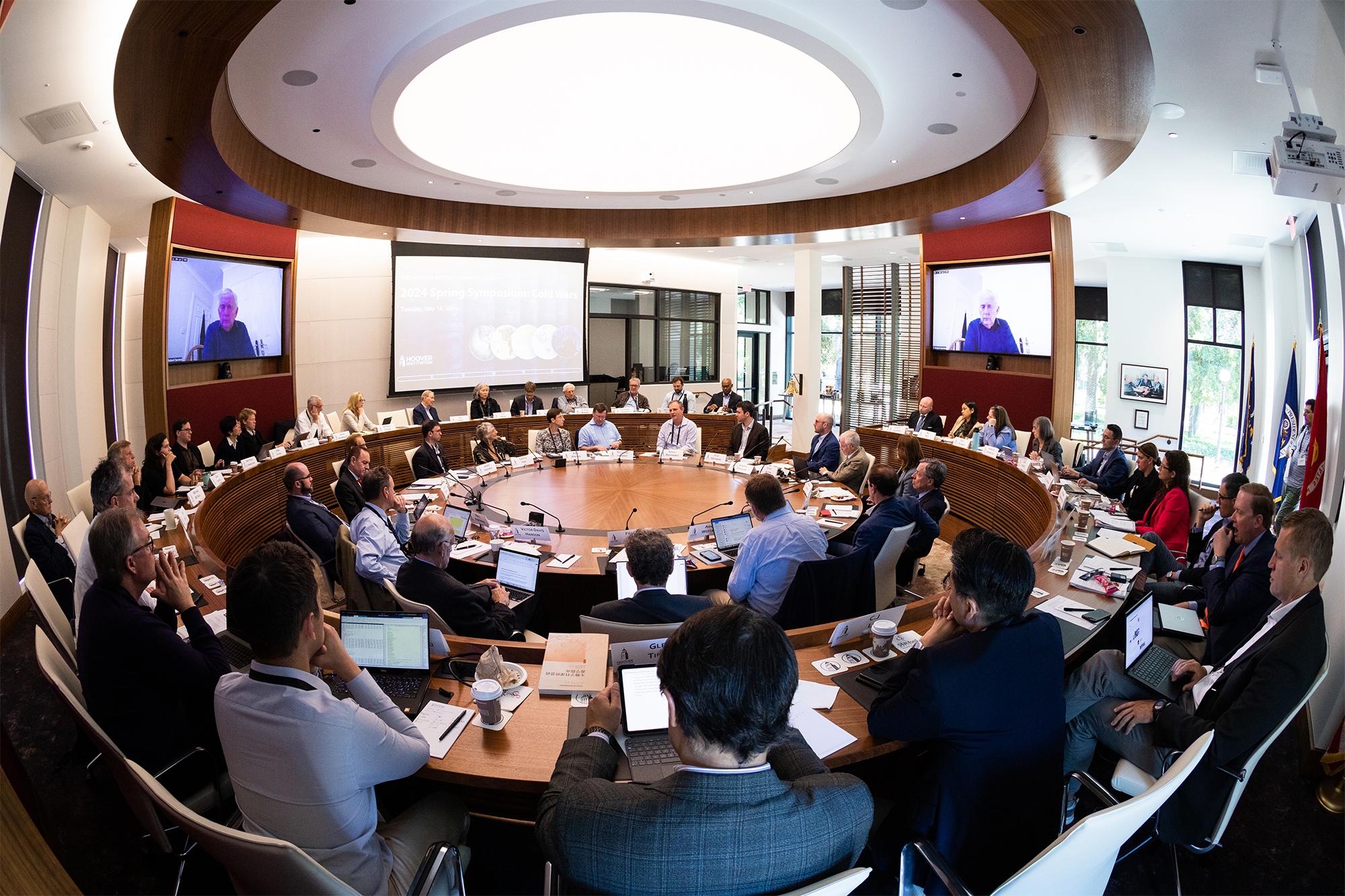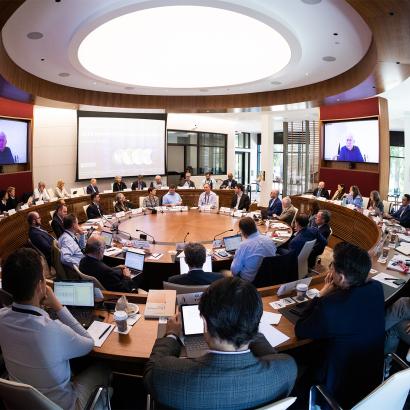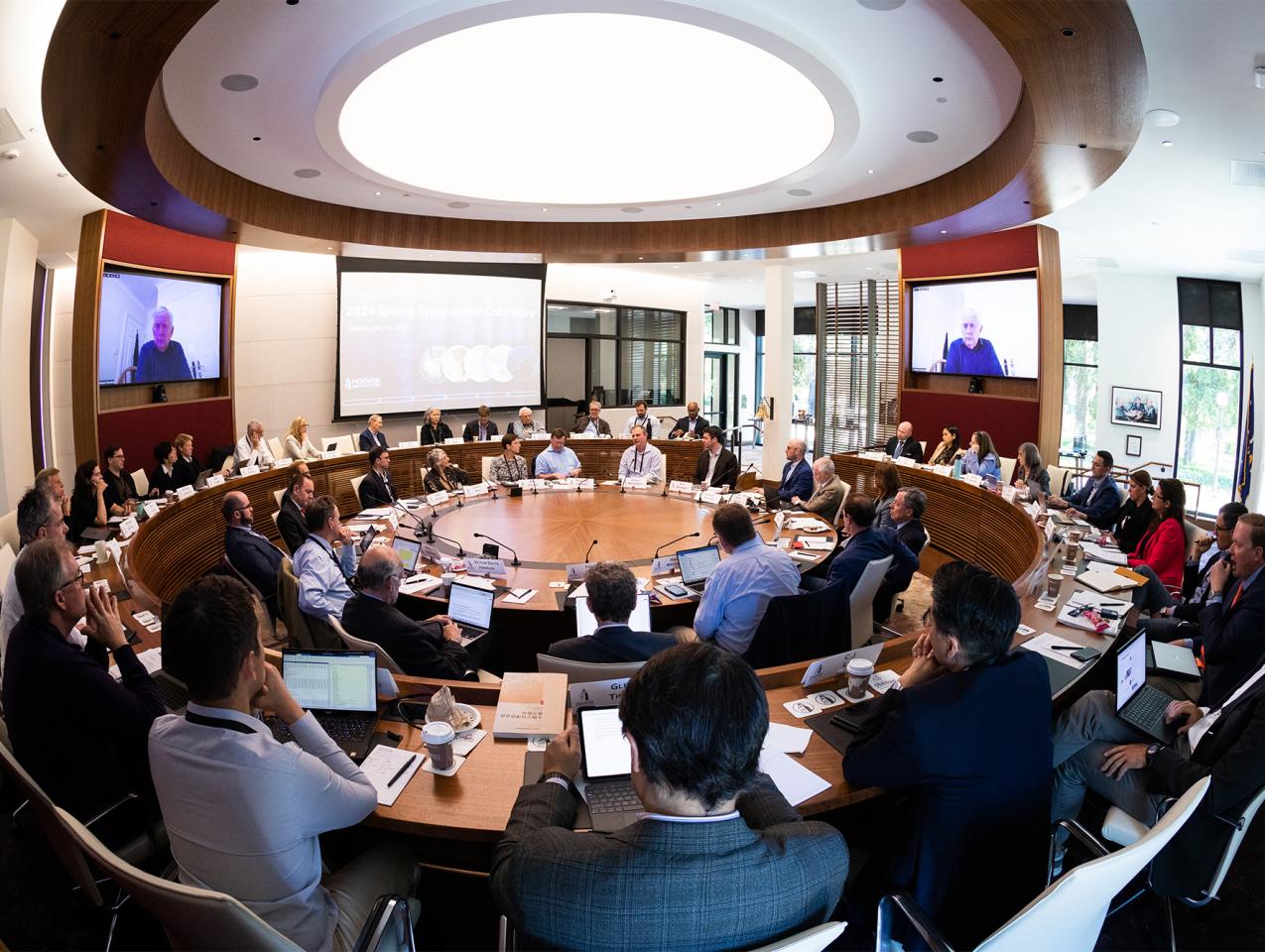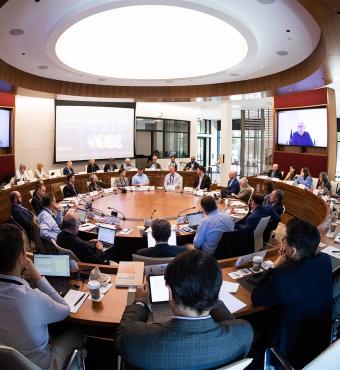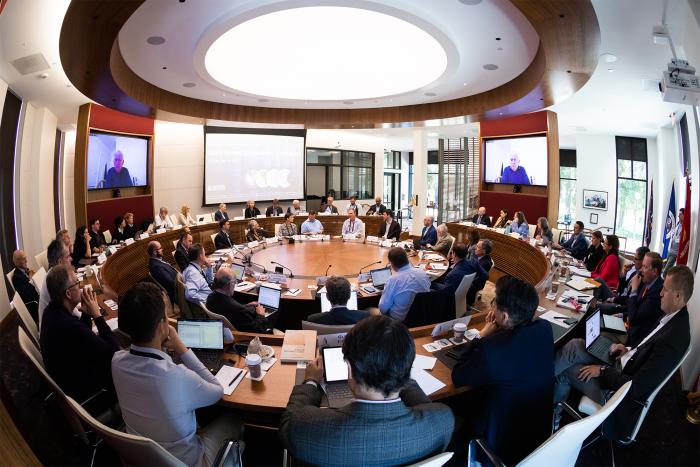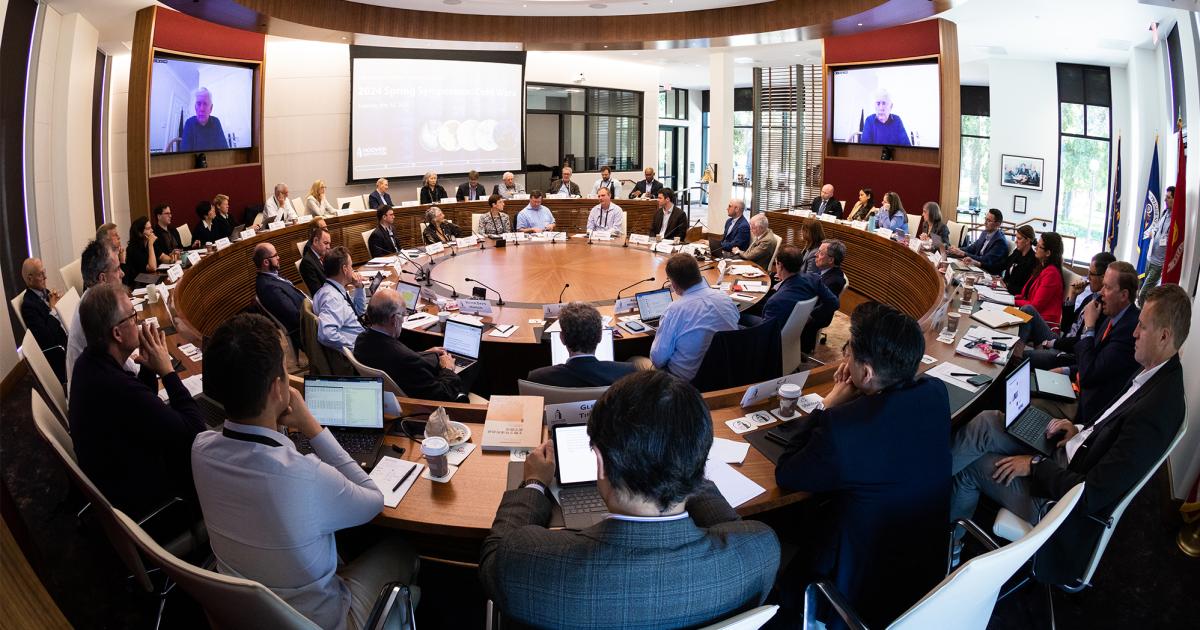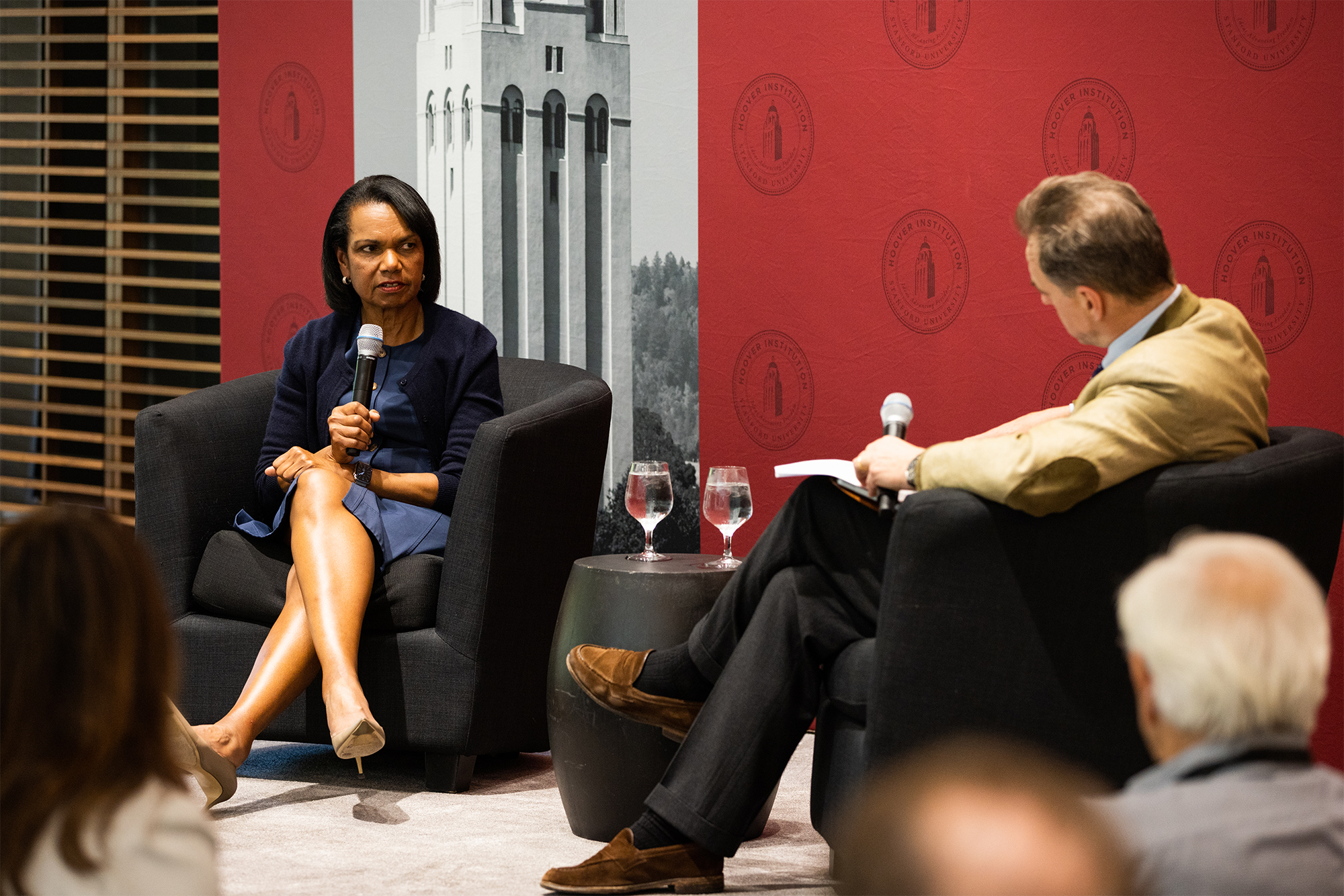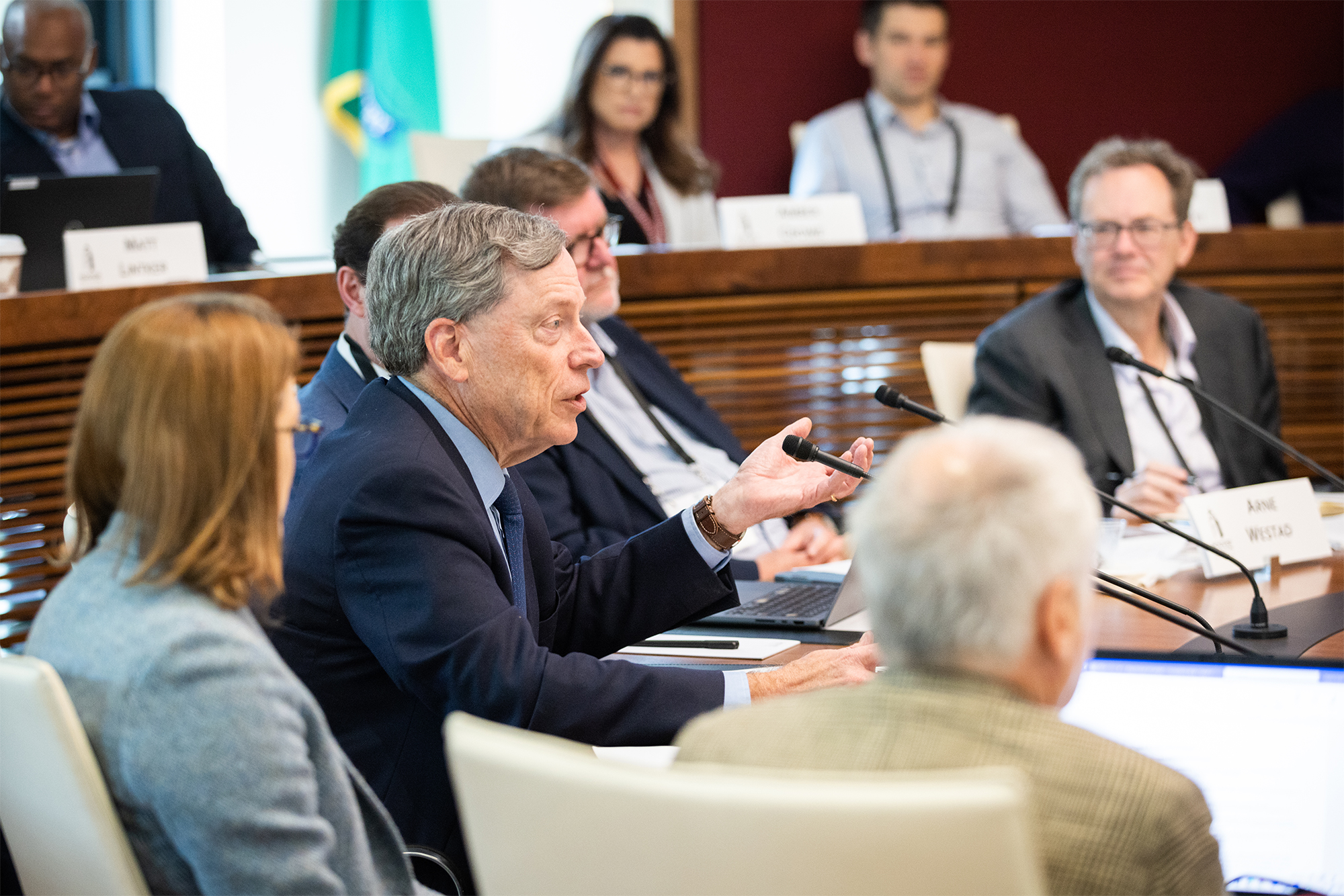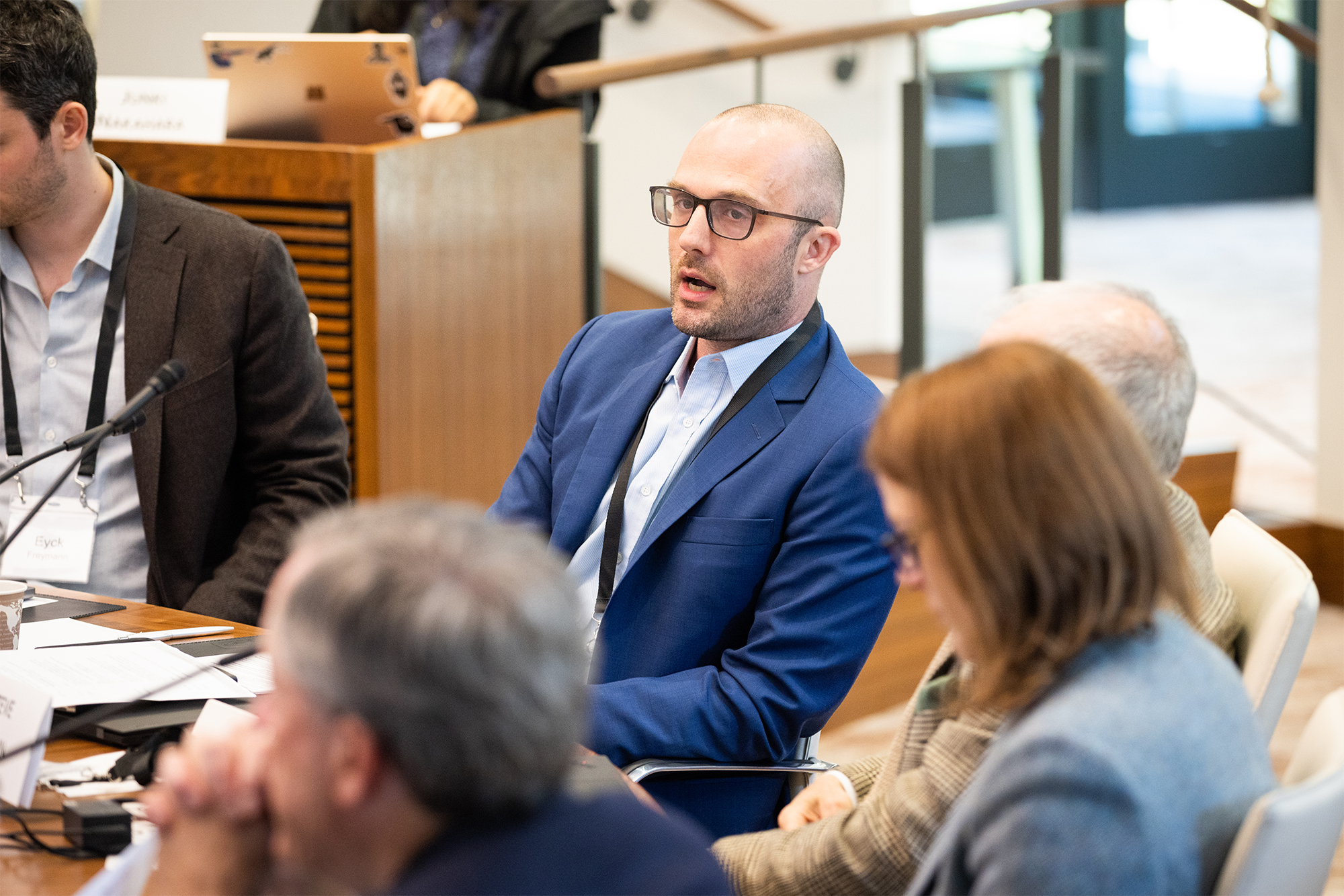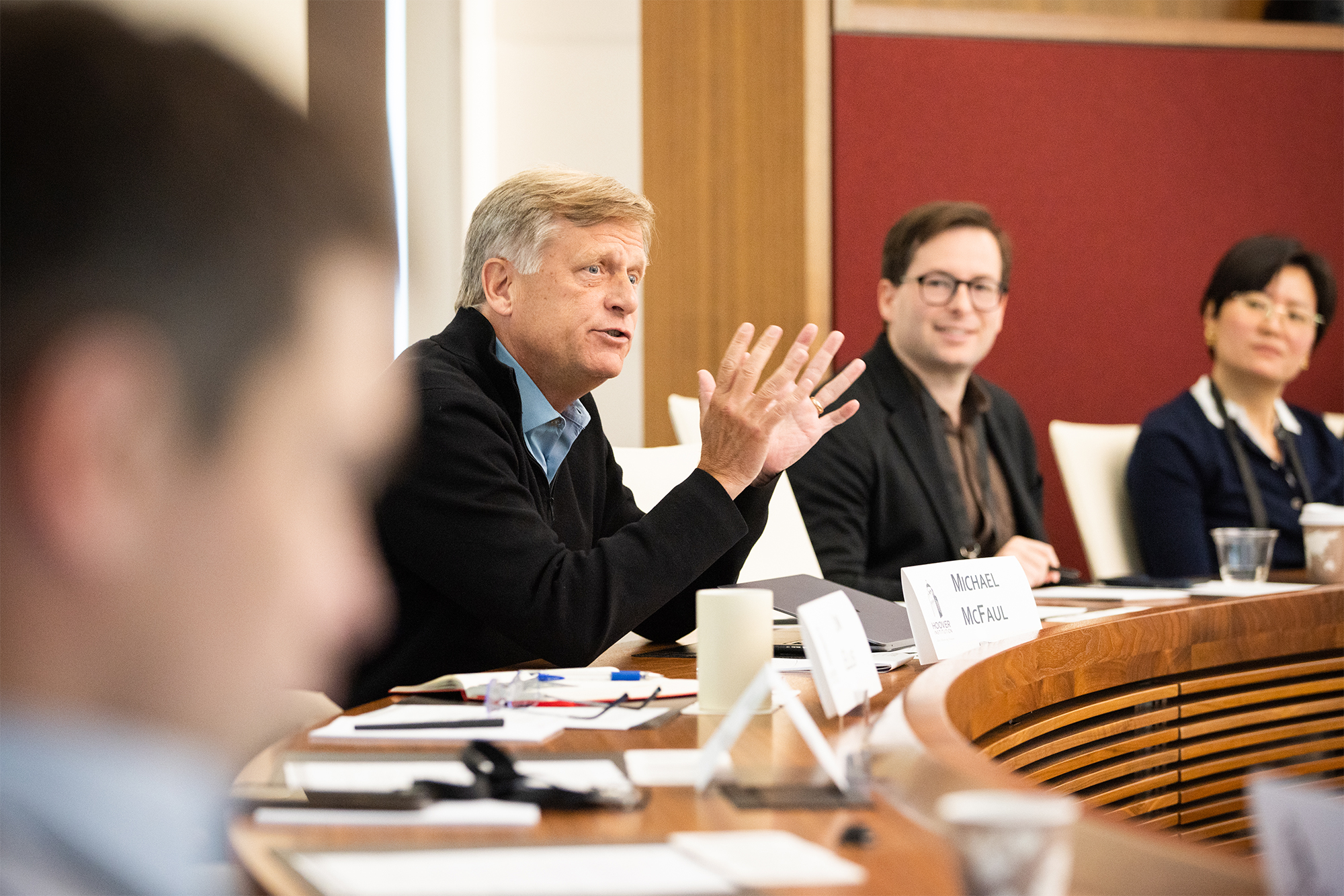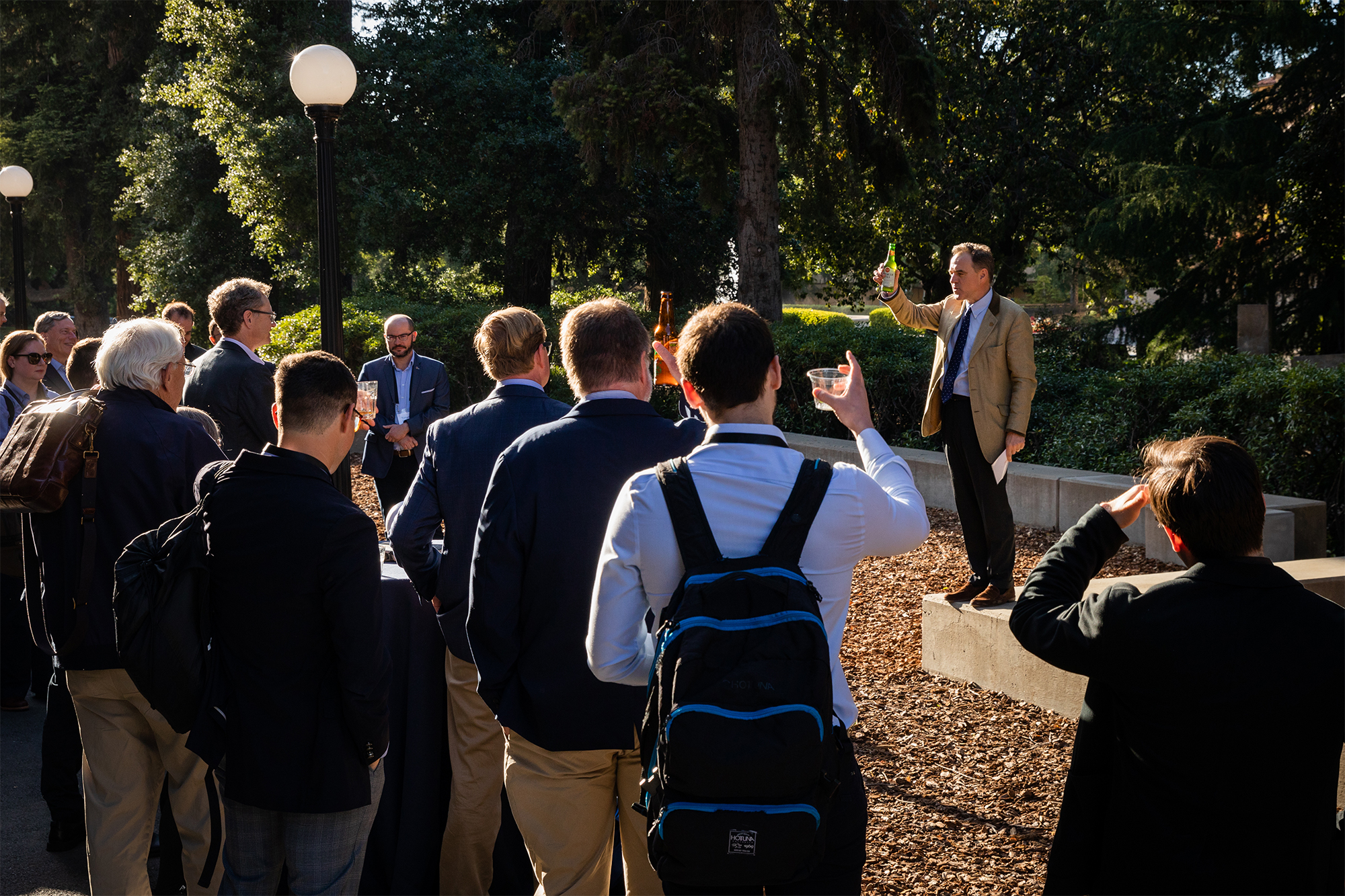Hoover Institution (Stanford, CA) – The Hoover Institution’s History Working Group, chaired by Milbank Family Senior Fellow Niall Ferguson, hosted its latest spring History Lab Symposium on May 14, 2024. This year’s theme was “Cold Wars.”
In the Annenberg Conference Room of the newly constructed George P. Shultz Building, historians and academics from history-related fields convened to discuss nine papers that focus on the Cold War between the United States and the Soviet Union from 1947 to 1987, contrasting it with the current China-US antagonism and other historical examples of rivalries that resembled cold wars.
The papers discussed also asked if there were similarities between the Cold War and the geopolitical tensions in the years leading up to World War I. Another explored a counterfactual scenario whereby Henry A. Wallace, vice president to Franklin Delano Roosevelt during World War II, succeeded FDR as president and pursued a conciliatory agenda with the Soviet Union.
Throughout the symposium, three distinct interpretations of today’s environment emerged.
In one, Ferguson and other scholars, including Canadian technology lawyer George Takach and Sergey Radchenko of Johns Hopkins University, contend that the United States and China are already engaged in “Cold War II,” where the competition is largely technological in nature but could involve armed conflict over locales such as Taiwan.
In a second interpretation, some scholars argued that the US-China relationship is not as fractious as the Soviet-US one, and that the United States and China are simultaneously competing and collaborating on an issue-by-issue basis.
In a third, championed by scholars including Botha-Chan Senior Fellow Philip Zelikow, the United States is not enveloped in a new cold war with China but with a wider anti-US axis that also includes Russia, Iran, North Korea, and a host of nonstate actors.
Hoover Institution director Condoleezza Rice also joined the symposium to discuss with Ferguson how the present US-China rivalry can be interpreted through the lens of the past and where today is much different from then.
For Ferguson, the current situation, with ties between Russia and China warming into a “no-limits” partnership, could perhaps be even more dangerous than the Cold War.
“I see a new situation in that the no-limits partnership between Russia and China is a partnership of two nuclear superpowers that must be different [than during the Cold War] for basic deterrence,” Ferguson said.
“Have we forgotten basics of deterrence?” he asked Rice.
Rice responded that while China is expanding its nuclear arsenal to rival that of the United States and Russia by the 2030s, it does not have a lengthy history of strategic arms control and the related negotiations necessary to develop treaties, a reality that is concerning.
But Rice cautioned Ferguson and the audience not to think the current moment can be entirely explained through the lens of the Cold War.
“As much as we’re drawn to historical analogies and metaphors, they can be misleading,” she said. “If they’re applied to wrong framework, where the fundamentals are different, than the outcomes can be misleading.”
She said that there is a whole host of differences between this moment and the most intense showdowns of the Cold War.
“If policymakers are trying to think about what it looked like before, they will miss the writing on the wall.”
The nine papers discussed on May 14 are as follows:
Interrogating the Cold War
Francis Gavin, Johns Hopkins University
Francis Gavin assesses the strengths and limitations of using study of the Cold War to gain insight into current events. He explores questions that challenge the conventional understanding of the Cold War, asking when the conflict began. He also asks how nonaligned powers and movements interacted with the United States and Soviets during this time. He questions how much policy actually impacted the outcome of the Cold War and weighs different methods to analyze the period from a historical perspective.
Cold War 2.0? Between History, Strategy, and Nostalgia
Daniel Sargent, UC Berkeley
Through a careful comparison of the current US-China relationship to that of the United States and the Soviet Union, Sargent argues we “should be ought to disentangle analysis of the present US-China relationship from the overbearing analogical influence of the Soviet-American Cold War.” Sargent walks through the history of the US-Soviet Cold War, its relevance to the current situation between the United States and China, and “the perils of a nostalgic approach to the past.”
Confronting Another Axis? History, Humility, and Wishful Thinking
Philip Zelikow, Hoover Institution
Zelikow argues that today, the United States faces a significant risk of war against a group of adversaries for only the third time since 1937. He compares today’s axis of Russia, China, North Korea, and Iran with the axes America faced in the twentieth century. He explores why states banded together in two periods (1937–41 and 1958–62) to oppose American activities. Pivoting to today, he says China is preparing for a major conflict and Russia is already engaged in one. He then provides his view of how the US can navigate the risks posed by this axis in the theaters of Europe, Asia, and the Middle East.
Sino-Russian Relations in Historic Context: Ideology, Agency, and Interests
Joseph Torigian, Hoover Institution
Torigian charts the development of the latest Sino-Russian partnership by looking back to a key factor in its development: the childhood of Chinese premier Xi Jinping and the career of his father, Xi Zhongxun. He says that “interpersonal relations are not a good explanation for why Russia and China are so close today” but that studying Xi Jinping and Vladimir Putin can reveal important insights into the dynamics of the relationship.
The Role of Resentment in Soviet and Russian Foreign Policy, 1945 to Today
Sergey Radchenko, Johns Hopkins University
Radchenko writes that the brutal and awful experiences of Nikita Khruschev, Leonid Brezhnev, and Mikhail Gorbachev as children and young adults during World War II likely influenced their approaches to statecraft. He moves on to describe how the Soviet Union assumed the role of a world power as well as the center of global revolution all at once, things that “often did not work well together.” He then describes a new source of resentment for Vladimir Putin, the occasional lecturing and derision in public comments by US presidents.
Trading with the Frenemy: The Anglo-German Antagonism before the First World War
Nicholas Lambert
Lambert writes that looking to the era of British-German antagonism from 1898 to 1914, specifically underlining trade, is an effective way to understand the current moment. Calling that historic period “Cold War 0,” Lambert writes that its lessons can be applied to the situation today involving China and the United States but that study should widen beyond the balance of sea and air combat power to include more consideration of the economic domain. He says both the US and China need to consider the extreme economic costs a short shooting war would incur to their societies.
The Anglo-American Antagonism and the Neutral Problem
Kate Epstein, Rutgers University
Epstein points out two little-understood facts about the period leading up to the start of the First World War. Actual data shows that Britain was not in any way experiencing terminal economic decline in the years leading up to 1914. In fact, it was the center of the financial world and the backstop behind most of the world’s trade. Second, she points out that President Woodrow Wilson pursued his own trade and foreign policy between 1914 and 1917, which involved exporting goods such as cotton in large amounts to Germany, directly against the wishes of Britain.
The Role of Ideology in Cold War I vs. Cold War II
Jeremy Friedman, Harvard Business School
Friedman argues that in its current great-power competition with China, the United States should maintain ideological flexibility, as it can be used to draw allies to its cause more easily than can China, which is more interested in purely economic or contractual relationships. He charts all the ways the US and Russia espoused their competing ideologies during the original Cold War, and how nonaligned states drew closer or more distant from them during those decades. He brings up how Brezhnev was able to put aside the fact that the Islamic Republic of Iran imprisoned progressives and sidelined minorities, because of the simple fact they diametrically opposed the United States.
Was the Cold War Inevitable? Considering the Counterfactual of a Wallace Presidency
Benn Steil, Council on Foreign Relations
Steil explores the counterfactual of a Henry Wallace presidency after 1945. Wallace served as the second vice president to Franklin Delano Roosevelt and admired many economic aspects of communism. Steil contends that if Wallace, an agrarian who dabbled in mysticism and astrology, had still been vice president (instead of Harry Truman) at the time of FDR’s passing , “there would [have] been no Truman Doctrine, no Marshall Plan, no NATO, no West Germany, no western European integration, and no policy of containment.”
_____________________________________________________________________________
"To read about the Fall 2023 History Symposium, in which scholars explored monetary and financial innovation patterns, click here."







